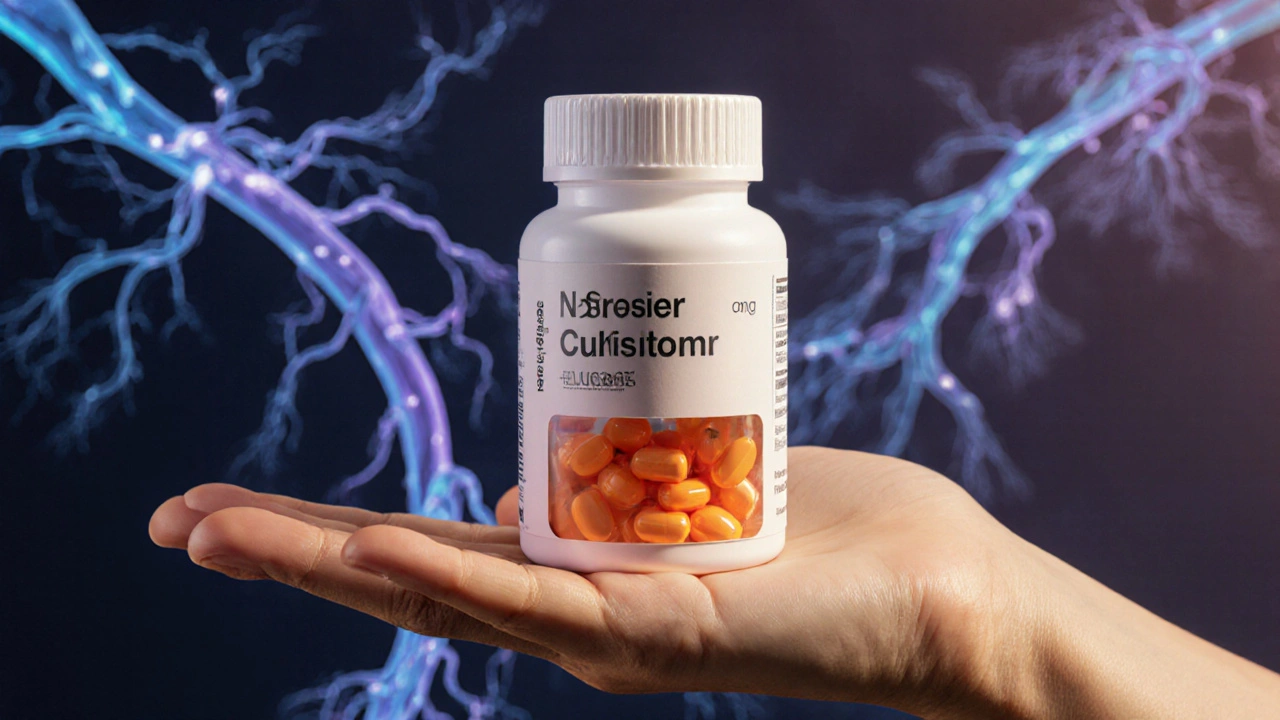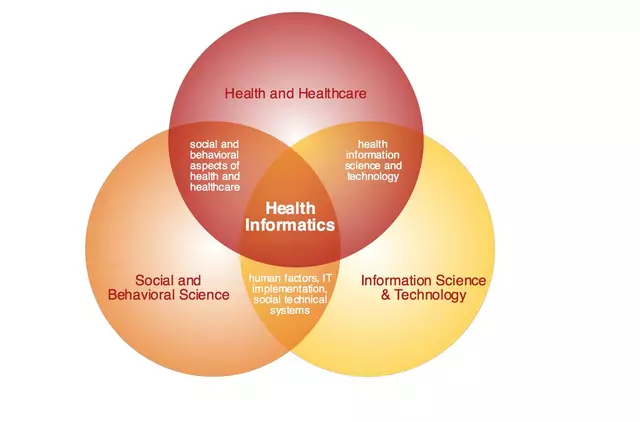Quick Take
- Blood thinners (anticoagulants) stop clots from forming or growing, cutting the risk of a pulmonary embolism (PE).
- PE usually starts as a deep‑vein thrombosis (DVT) in the leg; treating the DVT prevents the PE.
- Heparin works fast in hospitals; warfarin needs regular blood tests; DOACs offer fixed dosing without routine monitoring.
- Bleeding is the biggest side‑effect; patients should know when to pause medication and when to seek help.
- Long‑term prevention often means staying on a low‑dose anticoagulant for months or years, depending on the underlying risk.
When a clot blocks a lung artery, the result is a pulmonary embolism - a life‑threatening emergency. The good news? The same class of drugs that treat heart‑related clots also keep a PE from ever happening. Below we unpack how blood thinners are medications that interfere with the blood‑clotting cascade to prevent or treat thrombotic events fit into the PE picture, which drugs are best for different patients, and how to manage the inevitable bleeding risk.
What Is Pulmonary Embolism?
Pulmonary embolism is a blockage in one of the pulmonary arteries caused by a blood clot that has traveled from elsewhere in the body, most often the deep veins of the legs. When a clot lodges in the lung, oxygen exchange drops, causing chest pain, shortness of breath, and in severe cases, shock or death. Statistics from the Australian Institute of Health and Welfare show about 6000 new PE cases each year in Australia, with a mortality rate of roughly 10% if untreated.
The usual suspect behind a PE is deep‑vein thrombosis a clot that forms in the deep veins of the lower extremities, often after prolonged immobility, surgery, or cancer. Because DVT and PE share the same root cause - a hyper‑coagulable state - preventing the first step (the DVT) is the most effective way to stop a PE.
How Blood Thinners Work
Blood clotting follows a cascade of proteins called clotting factors. Anticoagulants intervene at different points:
- Heparin binds to antithrombin, neutralising factorIIa (thrombin) and factorXa.
- Warfarin blocks vitaminK recycling, decreasing production of vitaminK‑dependent factorsII, VII, IX, and X.
- Direct oral anticoagulants (DOACs) target a single factor, usually factorXa (e.g., rivaroxaban, apixaban) or thrombin (dabigatran), providing a more predictable effect.
By breaking the chain, the drugs keep clots from growing and stop new ones from forming - the cornerstone of both PE prevention and treatment.
Main Types of Anticoagulants
Below is a quick rundown of the most commonly used blood‑thinner families.
Heparin is an injectable anticoagulant that works within minutes by enhancing antithrombin activity is typically given in the hospital for acute PE or DVT. Low‑molecular‑weight heparin (LMWH) such as enoxaparin has a longer half‑life and can be self‑administered at home.
Warfarin is an oral vitaminK antagonist that requires frequent INR monitoring to stay in the therapeutic range (usually 2.0-3.0 for PE) has been the workhorse for decades. Its dose is affected by diet, other meds, and genetics, making it a less popular first‑line choice today.
Direct oral anticoagulants (DOACs) are a newer class of oral agents that directly inhibit a single clotting factor, offering fixed dosing without routine lab monitoring include:
- Factor Xa inhibitors: rivaroxaban, apixaban, edoxaban.
- Direct thrombin inhibitor: dabigatran.
DOACs have rapidly become the preferred option for most uncomplicated PE cases because they start working within a few hours and have predictable pharmacokinetics.
| Drug | Route | Onset | Monitoring | Typical Duration for PE | Key Contra‑indication |
|---|---|---|---|---|---|
| Heparin (LMWH) | Subcutaneous | Minutes | None (peak anti‑Xa levels optional) | 5‑10days (bridge to oral) | Severe thrombocytopenia |
| Warfarin | Oral | 48‑72h | INR 2‑3 weekly | 3‑6months (or longer if risk persists) | Pregnancy, uncontrolled INR variability |
| Rivaroxaban (Xa inhibitor) | Oral | 2‑4h | None | 3‑6months (or indefinite) | Active major bleeding, severe renal impairment |
| Dabigatran (thrombin inhibitor) | Oral | 2‑3h | None (baseline renal function) | 3‑6months (or indefinite) | Mechanical heart valves |

Choosing the Right Blood Thinner
Decision‑making hinges on three factors: patient risk profile, drug characteristics, and practical considerations.
- Renal function: DOACs are cleared by kidneys; severe renal impairment (< 15mL/min) pushes clinicians toward heparin or warfarin.
- Bleeding risk: History of gastrointestinal bleeding or intracranial hemorrhage often steers treatment toward lower‑dose warfarin with tight INR control.
- Drug interactions: Warfarin interacts with many antibiotics, antifungals, and leafy vegetables. DOACs have fewer but still notable interactions (e.g., with strong P‑gp inhibitors).
- Patient preference: Some avoid injections; others dislike regular blood tests. Shared decision‑making improves adherence.
Guidelines from the American College of Chest Physicians (2023 update) recommend DOACs as first‑line for most patients without contraindications, reserving heparin for initial inpatient therapy and warfarin for those with mechanical heart valves or severe renal disease.
Treatment Protocols: From Emergency to Long‑Term
When a PE is diagnosed, the typical pathway looks like this:
- Acute phase (first 5‑10days): Start with LMWH or unfractionated heparin to achieve rapid anticoagulation.
- Bridge to oral therapy: Overlap heparin with the chosen oral agent (warfarin or DOAC) for at least 24hours until therapeutic levels are confirmed.
- Continuation phase (3‑6months): Most patients stay on the same oral anticoagulant. Repeat imaging isn’t always needed unless symptoms persist.
- Extended prevention: For patients with ongoing risk (cancer, recurrent DVT, genetic thrombophilia), low‑dose DOACs or warfarin may continue indefinitely.
Monitoring differs: LMWH uses anti‑Xa levels only in special cases; warfarin relies on INR; DOACs generally need a baseline renal function check and annual reassessment.
Bleeding Risks and How to Manage Them
All anticoagulants raise bleeding risk, but the severity varies. Major bleeding signs include:
- Unexplained bruising or swelling.
- Blood in urine, stool, or vomit.
- Sudden severe headache (possible intracranial bleed).
If a patient presents with major bleeding, clinicians may reverse the anticoagulant:
- Heparin: protamine sulfate.
- Warfarin: vitaminK plus fresh frozen plasma or prothrombin complex concentrate.
- FactorXa inhibitors: andexanet alfa (where available) or activated charcoal if ingestion <2hours ago.
- Dabigatran: idarucizumab.
Patients should be educated to stop the drug and seek emergency care at the first sign of serious bleeding.
Lifestyle Measures That Complement Blood Thinners
Medication isn’t a magic bullet. Combining anticoagulation with healthy habits cuts recurrence dramatically.
- Movement: Get up and walk every hour during long trips or after surgery.
- Compression stockings: Graduated stockings reduce leg‑vein stasis, especially after DVT.
- Weight management: Obesity raises clot risk; aim for a BMI under 30.
- Avoid excess alcohol: Heavy drinking can impair liver function and increase bleeding.
- Medication review: Discuss over‑the‑counter NSAIDs or herbal supplements with your doctor.
By pairing blood thinners with these actions, patients boost protection against new clots while keeping bleed risk manageable.

Frequently Asked Questions
Can I stop taking my blood thinner once I feel better?
No. Even if symptoms vanish, the clotting risk remains. Stopping early raises the chance of a new clot, which could be fatal. Follow the prescribed duration-usually at least three months-and talk to your doctor before any change.
Do blood thinners affect pregnancy?
Most anticoagulants cross the placenta. Warfarin is teratogenic, especially in the first trimester. Low‑molecular‑weight heparin is the preferred choice during pregnancy because it doesn’t enter the fetal circulation.
How often should I get blood tests while on a DOAC?
Routine coagulation tests aren’t needed for DOACs. However, doctors will check kidney function at baseline and then annually (or more often if you have chronic kidney disease).
Is there a diet I need to follow on warfarin?
VitaminK‑rich foods (leafy greens) can alter INR. You don’t have to avoid them, but keep your intake consistent day‑to‑day and inform your clinician of any big changes.
What should I do if I miss a dose of my DOAC?
Take the missed dose as soon as you remember-if it’s within 12hours of the next scheduled dose. If it’s closer to the next dose, skip the missed one and continue the regular schedule. Never double‑dose.






Christopher Ellis
September 28, 2025 AT 05:26Life is a cascade of choices and blood thinners are just another illusion of control we cling to. Yet the very notion of preventing clots may be a trap we set for ourselves.
kathy v
September 28, 2025 AT 06:50When we discuss anticoagulation, we must first recognize that the United States has always been the bastion of medical innovation, a fact that many foreign commentators overlook with envy. The development of DOACs is a testament to American ingenuity, and to suggest otherwise is, frankly, an insult to our scientific heritage. It is not enough to simply point out the bleeding risks; we must champion the brave patients who choose these therapies over outdated warfarin regimens. Our clinicians have the responsibility to educate, not to coddle, those who fear occasional bruises while saving lives. The guidelines published in 2023 clearly prioritize direct oral anticoagulants for most patients, and any deviation from that protocol should be scrutinized. Moreover, the resilience of our healthcare system allows for rapid access to reversal agents, something many neighboring countries cannot boast. While some critics argue that the cost of these newer agents is prohibitive, they ignore the long-term savings from preventing recurrent embolic events. The emphasis on patient preference is commendable, yet it must not eclipse the reality that many patients lack the knowledge to make informed choices without physician guidance. Please remember that senior physicians have decades of experience that cannot be replicated by a quick internet search. The notion that “one size fits all” is a lazy approach that undermines personalized medicine. Indeed, the interplay between renal function and drug clearance is a nuanced dance that only seasoned practitioners can choreograph. In addition, the availability of antidotes like andexanet alfa demonstrates our commitment to safety, a luxury not afforded universally. To criticize the United States for adopting these practices is to ignore the data that shows reduced mortality rates. Our hospitals have the infrastructure to monitor therapy, whether through INR or anti‑Xa levels, ensuring optimal outcomes. Finally, let us not forget the patients who survive multiple episodes of DVT precisely because we intervened early with appropriate anticoagulation. The bottom line is that American medicine leads the world in both innovation and implementation, and we should be proud of that legacy.
Jorge Hernandez
September 28, 2025 AT 08:13Hey everyone 😊 just wanted to say great job on breaking down those blood thinner options. The info about monitoring is super helpful and gives patients confidence. Keep it up 👍
josh Furley
September 28, 2025 AT 09:53People think newer drugs are always better but remember that factorXa inhibitors still carry a risk of bleed and the term "fixed dosing" is just marketing jargon. Simpler doesn’t mean safer.
Jacob Smith
September 28, 2025 AT 11:33Thats it.
Chris Atchot
September 28, 2025 AT 13:13While the brevity of the previous comment is noted, it is essential to emphasize that anticoagulation therapy requires a comprehensive assessment; therefore, a concise statement may overlook critical nuances, such as renal function, drug interactions, and patient adherence, all of which are pivotal for optimal outcomes.
Shanmugapriya Viswanathan
September 28, 2025 AT 14:53Our nation's clinicians have pioneered the use of DOACs, and no other country can match the speed at which we adopted these life‑saving drugs :-) The data is clear, and the evidence supports our leadership in this field.
Rhonda Ackley
September 28, 2025 AT 16:33The narrative surrounding anticoagulation often feels like a theatrical production where the spotlight shines on the drama of bleeding risk, yet the quiet heroics of preventing a silent, deadly clot in the lungs receive far less applause. In this unfolding saga, the patient stands on the stage, and the healthcare team, though well‑intentioned, sometimes delivers lines that echo uncertainty rather than reassurance. The subtle tension between a nurse’s gentle reminder to take medication and a physician’s cautious warning about a possible bleed creates an atmosphere thick with anticipation. While the audience-us, the readers-might crave a clear resolution, the reality remains a complex script written in medical guidelines, patient histories, and evolving research. The curtain may rise again with new reversal agents, but the underlying plot remains: a balance between life‑preserving therapy and the ever‑looming shadow of hemorrhage. Thus, the story continues, and each chapter adds depth to our collective understanding, even if the plot twists leave us longing for a definitive ending.
Sönke Peters
September 28, 2025 AT 18:13Anticoagulation choices depend on kidney function and patient preference.
Paul Koumah
September 28, 2025 AT 19:53Oh great another drug no monitoring needed because we love living on the edge.
Erica Dello
September 28, 2025 AT 21:33It is disheartening to see people ignore the importance of proper INR monitoring, especially when the consequences can be severe 😔 we must hold ourselves to higher standards and educate patients responsibly.
sara vargas martinez
September 28, 2025 AT 23:13In the grand scheme of thromboembolic management, one cannot simply reduce the conversation to a binary choice between DOACs and warfarin without first acknowledging the myriad of variables that influence therapeutic decisions, including but not limited to genetic polymorphisms affecting CYP450 metabolism, patient comorbidities such as chronic kidney disease or active malignancy, the presence of antiphospholipid syndrome, and even socioeconomic factors that dictate drug accessibility and adherence patterns. Moreover, the pharmacodynamic profiles of factor Xa inhibitors versus direct thrombin inhibitors present distinct advantages and drawbacks when scrutinized under the lens of real‑world evidence, which has consistently demonstrated nuanced differences in bleeding rates, especially intracranial hemorrhage, across diverse patient cohorts. Therefore, a comprehensive approach that integrates guideline recommendations with individualized risk stratification tools, such as the HAS‑BLED score for bleeding and the YEARS algorithm for diagnostic work‑up, is paramount to optimizing outcomes. Only by embracing this complexity can clinicians avoid the pitfalls of oversimplification that have historically plagued the field and ensure that each patient receives the most appropriate, evidence‑based anticoagulant regimen.